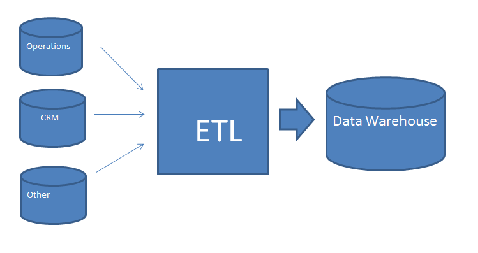Data Integration
Data integration is another hot topic within the BI landscape. The term can mean different things depending on which area of IT you’re in though. Here we’ll discuss it within the context of business intelligence.
Most enterprise business intelligence tools are built to run against a large scale data warehouse. This is for many reasons: databases are scalable, have security, etl, and are a single version of the truth. The warehouse itself sources its data usually from other databases and enterprise systems. This includes pieces like point of sale systems, accounting systems, and transactional data. Usually an ETL process handles the conversion of data from these areas to the warehouse.

However, many times critical data is not stored in these organized systems. Tons of data, calculations and spreadsheets often sit in Excel, Access or legacy systems and simply aren’t easily accessible by standard BI tools or ETL. Its often data that sits in a department or a users desktop, and so is basically hidden to IT. Users often end up merging exported BI reports with Excel, or other data, on their own. This is often considered “departmental BI” , with lines of business or areas concocting their own Bi solutions. Using these types of local data sources, especially for rapid protoyping or to get a project off the ground is also sometimes called agile BI. These pain points are so widespread that many business intelligence software vendors are going after this exact market.
Tools like Qlikview and Tableau have major marketing points built around their easy data integration, and the fact that they don’t require a traditional datawarehouse to function, with the associated IT hassles. They can use Excel, text or other user driven data to build up models. The bigger vendors have been slower to assimiliate the ability to have this type of flexibility in their tools. Microstrategy has attempted with its Visual Insight, and Microsoft has beefed up its Excel and PowerPivot tools.While a well-modeled data warehouse is still the best practices way to go, the reality is many organizations have lots of separate data sources to integrate that will fall outside of ETL. From an evaluation perspective, its important to keep in mind what capabilities the solution you are based on can handle.
Go to Home from Data Integration
Copyright 2011-2022 BusinessIntelligenceBase.com